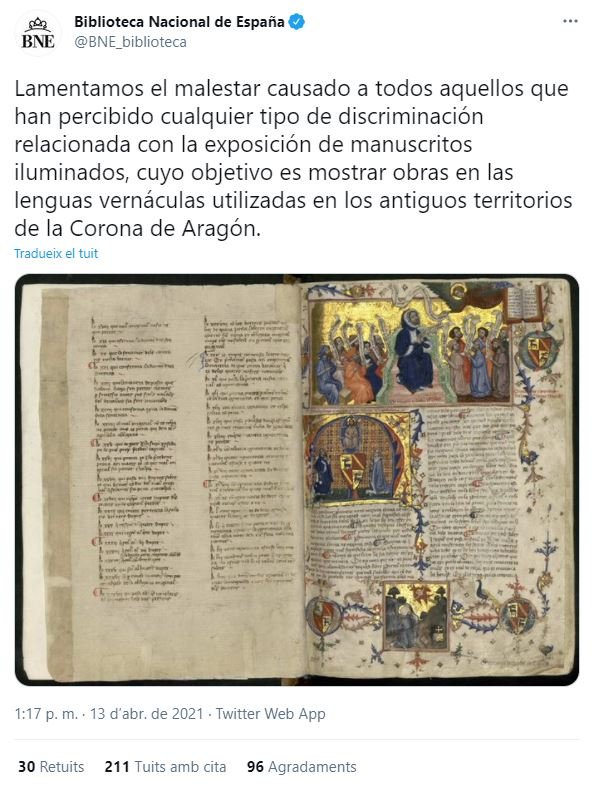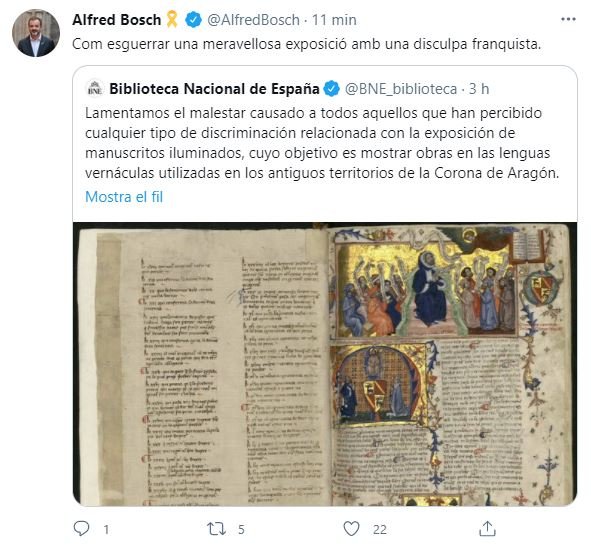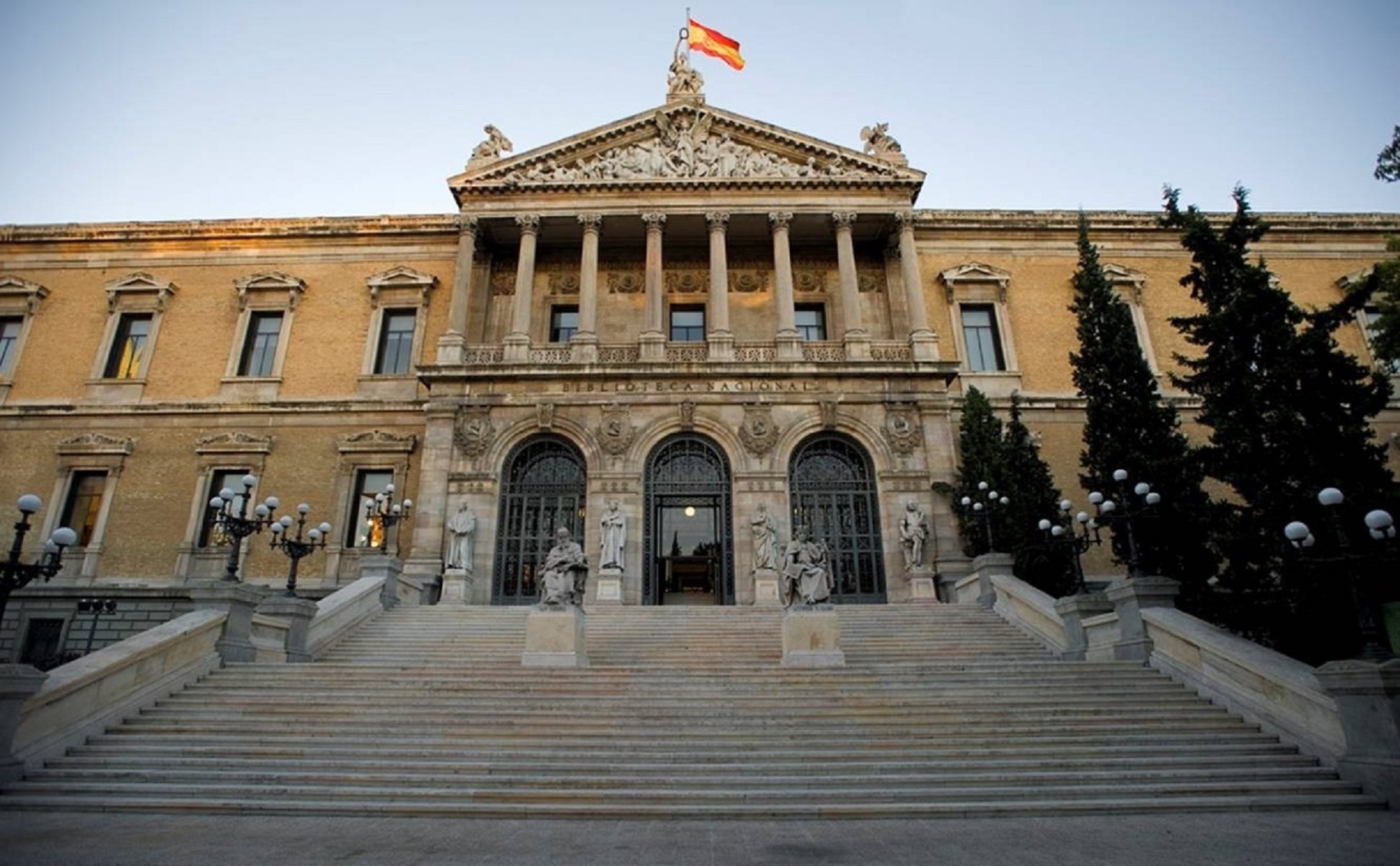The National Library of Spain has made disparaging statements about the Catalan language in a new linguistic controversy in relation to an exhibition centred on medieval literature. The library's exhibition is entitled "The light of the Middle Ages in Catalan literature". But this name led to complaints, and the library then apologized for using the term "Catalan literature". The exhibition includes a number of key mediaeval works and authors from across the Catalan-speaking lands, including 15th century authors such as Joanot Martorell, author of the classic tale of the knight Tirant lo Blanc, and Jaume Roig, who wrote the verse novel L'Espill.
"The National Library of Spain regrets the distress caused to all those who have perceived any type of discrimination related to the said exhibition," begins the apology from the institution led by Ana Santos Aramburo. "The aim has been to show works whose textual basis reflects the vernacular languages used in the old territories of the Crown of Aragon" said the press statement made this Tuesday, although it did add that in this display of material in "vernacular languages" there was indeed "special incidence of Catalan".

Political pressure has played a part in the controversy. Senators of Spain's Popular Party from the Valencian Country submitted a complaint to the Spanish government asking it to "correct the name of the exhibition to adapt to what it really is." They want the concept of "Catalan literature" to be replaced by "Valencian literature" - a manifestation of a long-running issue of linguistic separatism, which continues despite the fact that linguists regard the two variants as part of the same language.
The PP politicians demand that the Pedro Sánchez's executive "respect one of the characteristics of the Valencians' own identity, our language, called Valencian for centuries and being the current official name, used both in the Valencian Statute of Autonomy and in the Spanish Constitution. We demand that people stop being trampling on Valencians, considering us as 'second-class Catalans' and not 'first-class Valencians'".
Joan Ignaci Culla, creator of the Renaixença Valencianista cultural association, founded to defend the Valencian linguistic personality as separate from the Catalan one, also compained about the name of the exhibition. Specifically, he described it as "a shame to include Jordi de Sant Jordi, Joanot Martorell and other Valencian classics that forged a golden age of Valencian literature, as Catalan literature".
The library's justification
In its apologies for admitting, quietly, that the exhibition was based on medieval Catalan literature, the National Library recalled that the exhibition included texts by authors such as the Franciscan monk Francesc Eiximenis, who was born in Girona, Ramon Savall, a nobleman from Barcelona, or works such as the "Ceremonial of consecration and coronation of the kings and queens of Aragon", which was written in "Aragonese saturated with Catalanisms", a document promulgated by Pere IV the Ceremonious (sovereign of the Crown of Aragon and count of Barcelona).
The statements ends by summing up that the exhibition's focus is "a set of illustrated manuscripts", and once again refers to the fact they are linked by their use of the "vernacular languages of the Crown of Aragon", omitting to mention the Catalan language by name.
"What bothers some is the existence of the Crown of Aragon"
The Catalan culture minister, Àngels Ponsa, told the ACN agency that the statement was regretful, and that, in her opinion, "what bothers some people is the existence of the Crown of Aragon". However, she congratulated the curator of the exhibition and art historian Josefina Planas for an exhibition that "wonderfully" explains medieval Catalan literature from "beautiful manuscripts that travel from Ermenegau in Occitania, Eixemenis in Girona, Saval in Barcelona, Turmeda in Mallorca and, yes, indeed, Sant Jordi, Martorell and Roig in the Valencian Country".
Later, former Catalan foreign minister Alfred Bosch summed up the situation in a nutshell: "How to maim a wonderful exhibition with a Francoist apology."


